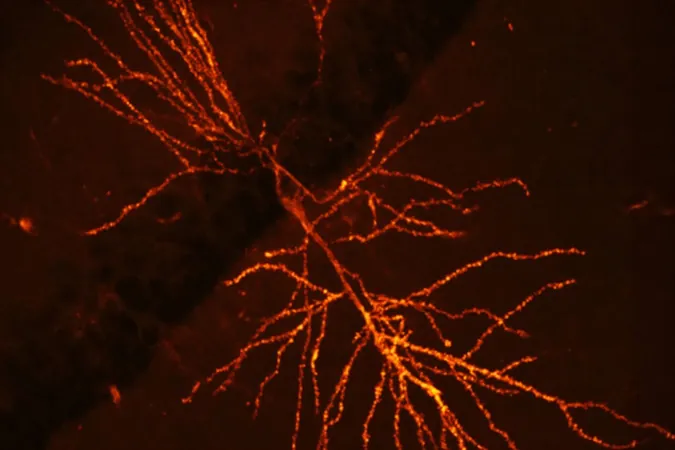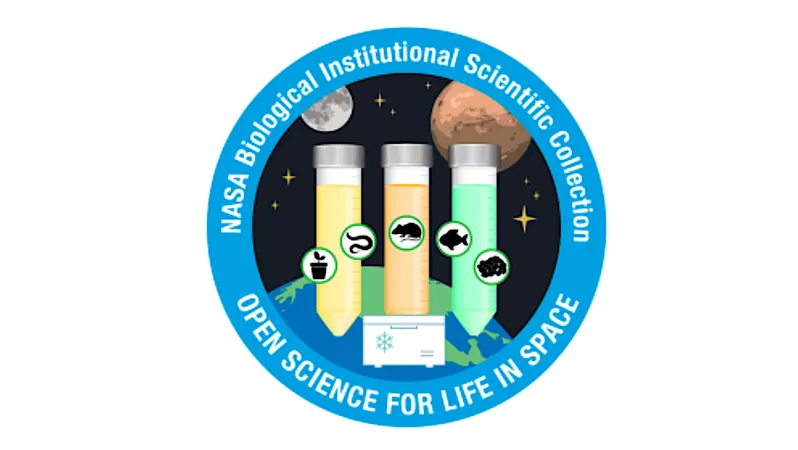
Unlocking the Secrets of Memory: Harvard's Groundbreaking Technique Could Revolutionize Treatment for Neurological Disorders
2025-05-07
Author: Mei
A Revolutionary Discovery in Memory Mapping
Harvard researchers have unveiled a groundbreaking technique that maps the molecular foundations of learning and memory, a discovery poised to reshape treatment for neurological disorders like dementia.
Adam Cohen, a renowned professor of chemistry and physics, emphasized the significance of this innovation: "This technique provides a lens into the synaptic architecture of memory, delivering unparalleled insights into how our brains adapt and learn."
The Brain: A Complex Network of Memories
Within the vast maze of our brains lies a staggering network of billions of neurons. Learning and memory hinge upon synaptic plasticity—the ability to strengthen the connections between these neurons. Every memory, from a nostalgic tune to a loved one's face, is etched into these synapses, the vital junctions for neuronal communication.
Introducing EPSILON: A Cutting-Edge Technique
The research team detailed their innovative method, named Extracellular Protein Surface Labeling in Neurons (EPSILON). This technique meticulously maps proteins essential for signal transmission across synapses, focusing on AMPARs—crucial players in the synaptic plasticity process.
By harnessing specialized dyes for sequential labeling, EPSILON allows researchers to observe AMPAR movements at high resolutions, marking a significant leap from traditional invasive methods.
Illuminating Synaptic Behavior Like Never Before
With advanced fluorescent labeling and state-of-the-art microscopy, the team could illuminate synaptic behaviors with unprecedented clarity, akin to shining a spotlight on the brain's delicate functions. This level of precision gives critical insight into the synaptic interactions that underpin learning.
Previous studies often lacked such detail, but EPSILON’s revelations are set to enhance our understanding of diseases like Alzheimer's, where synaptic dysfunction disrupts memory and learning.
Mapping Synaptic Dynamics Over Time
As researchers observed synaptic changes related to specific memories, intriguing patterns emerged. Doyeon Kim, a key contributor, remarked, "Our most significant breakthrough is our ability to map past synaptic plasticity history in a living brain, tracking how synaptic strength evolves during memory formation."
Initial Insights from Animal Studies
The inaugural application of EPSILON has already led to fascinating findings. In studies of mice undergoing contextual fear conditioning—where a neutral environment is associated with fear—researchers linked AMPAR activity to the expression of cFos, a gene indicating neuron activity, highlighting the connection between AMPAR trafficking and memory formation.
The Long Journey of Scientific Discovery
Cohen reflects on the journey from basic science to medical advancements: "The HaloTag technology used for labeling proteins traces back to a gene discovered in 1997 while studying soil bacteria's ability to break down pollutants. Our progress stems from supporting the entire scientific arc."
Looking Ahead: A New Frontier in Cognitive Research
As we look to the future, Cohen is enthusiastic about EPSILON’s potential applications in exploring various cognitive phenomena and enhancing therapeutic strategies to combat memory impairments. The molecular tool has already been shared with global labs, sparking a surge of research into the regulation of synaptic strength.
With such promising developments on the horizon, the quest to unravel the mysteries of memory continues.




 Brasil (PT)
Brasil (PT)
 Canada (EN)
Canada (EN)
 Chile (ES)
Chile (ES)
 Česko (CS)
Česko (CS)
 대한민국 (KO)
대한민국 (KO)
 España (ES)
España (ES)
 France (FR)
France (FR)
 Hong Kong (EN)
Hong Kong (EN)
 Italia (IT)
Italia (IT)
 日本 (JA)
日本 (JA)
 Magyarország (HU)
Magyarország (HU)
 Norge (NO)
Norge (NO)
 Polska (PL)
Polska (PL)
 Schweiz (DE)
Schweiz (DE)
 Singapore (EN)
Singapore (EN)
 Sverige (SV)
Sverige (SV)
 Suomi (FI)
Suomi (FI)
 Türkiye (TR)
Türkiye (TR)
 الإمارات العربية المتحدة (AR)
الإمارات العربية المتحدة (AR)